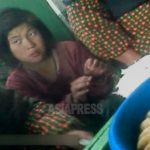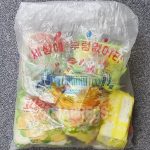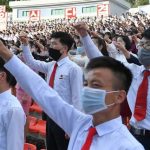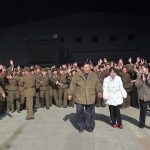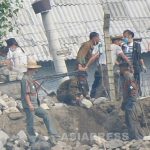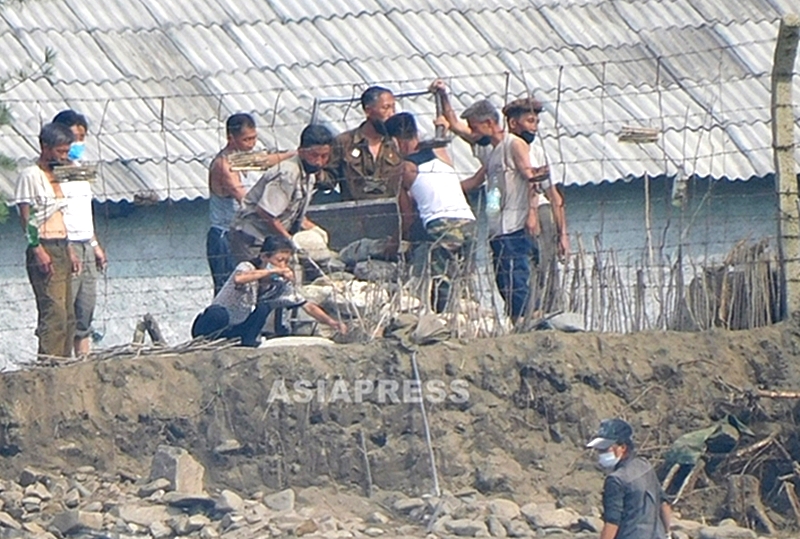
It has been a year and a half since the Kim Jong-un regime closed the border with China to prevent the influx of the coronavirus.
Human traffic has almost ceased. Many of the diplomats and officers of international organizations stationed in Pyongyang have left the country. In addition, as of the end of July, international mail services have been completely suspended. The 1,400 km long border between North Korea and China is on high alert, making it impossible to cross or leave the country. Therefore, reliable avenues of information have been completely cut off.
Over the years, ASIAPRESS has been bringing Chinese cell phones into North Korea to keep in touch with reporting partners. However, it has become difficult for them to move around the country, and it is becoming more and more challenging to grasp the situation outside of their local area of residence.
Now, there are even people starving to death among the impoverished and vulnerable urban population. So, what is going on inside North Korea? To find out, in mid-July, our China-based reporting partner went to the lower reaches of the Yalu River on the border between North Korea and China. This report is part of a two-part series showing scenes in North Pyongan Province, as taken with a super-telephoto lens from the Chinese side.
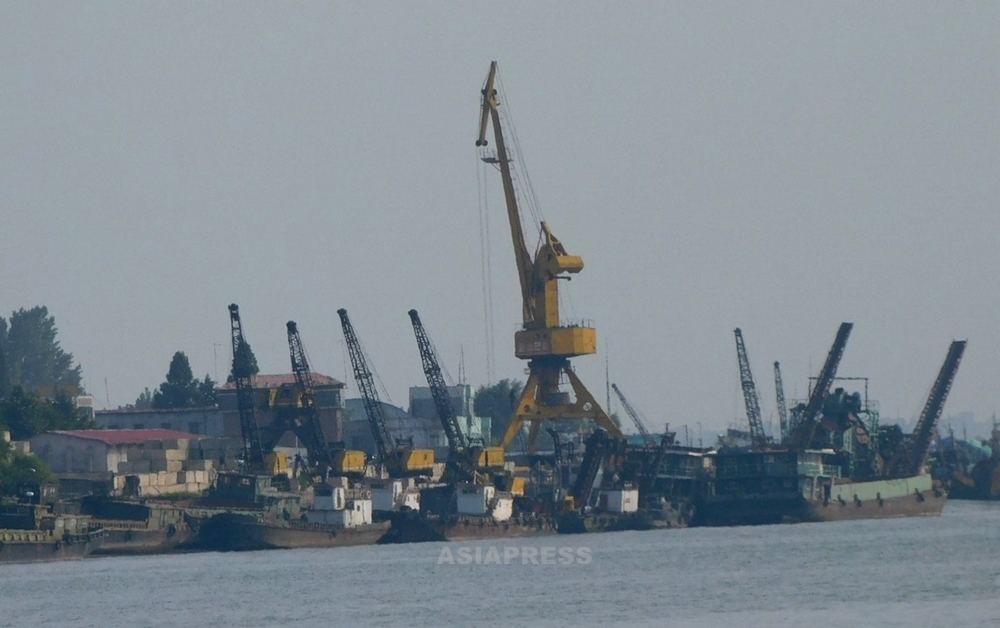
◆Disappearing Residents: The Strictly Guarded Border is Full of Soldiers.
On the other side of the border from Dandong, Liaoning Province is Sinuiju city of North Pyongan Province. A Chinese tourist boat is in operation in the vicinity of the international communication bridge. The photographer also approached North Korea by boat.
“There are hardly any people on the North Korean side except for soldiers. Before the COVID-19 pandemic, it was common to see people loading and unloading cargo, fishing, and walking around. There were no North Korean ships operating in the river too."
The North Korean authorities have been controlling the access of residents to the Yalu and Tumen Rivers, which form part of the northern border, since before the COVID-19 outbreak. Nowadays, they are on high alert. In addition to a total ban on access to the rivers, a particular unit known as the "Storm Corps," composed of soldiers selected from the Korean People's Army and other departments, has been deployed to strengthen the border checkpoints.
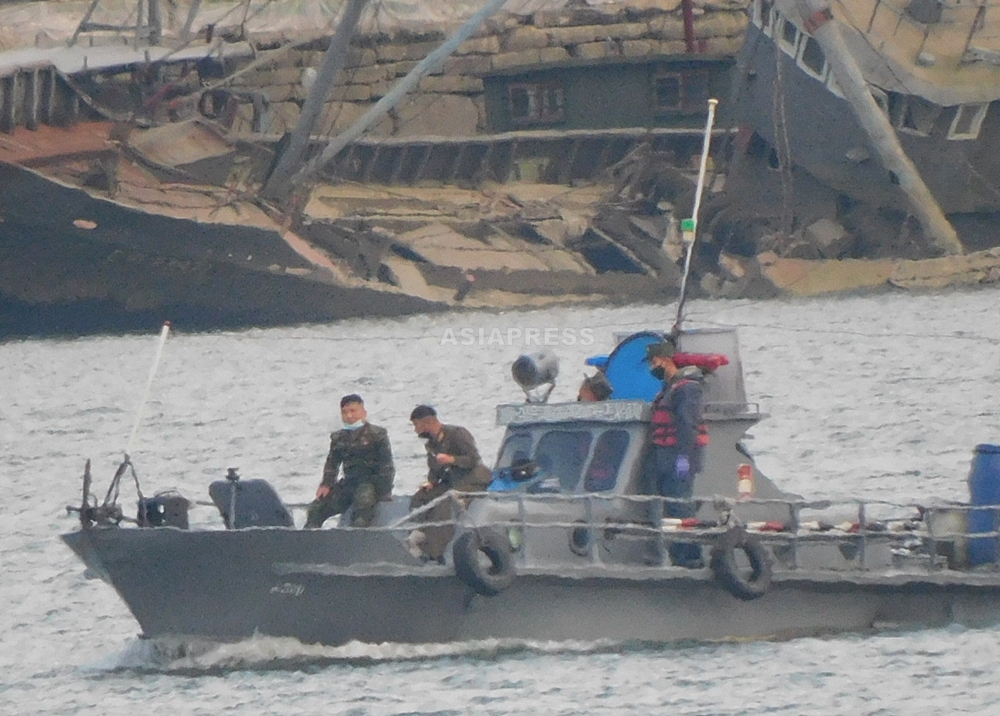
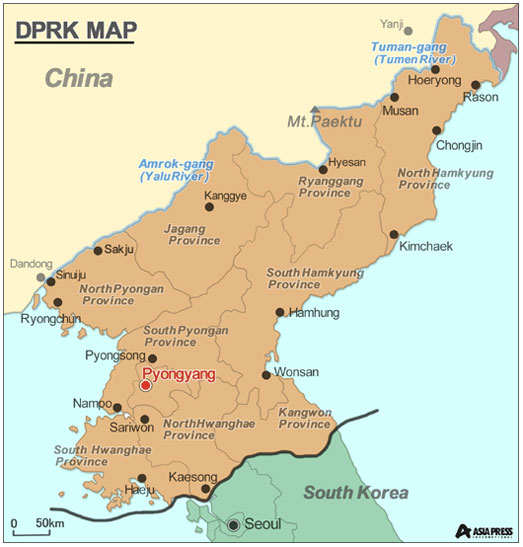
It is claimed that the increased security is to prevent the influx of viruses through smuggling goods and collecting trash. Last August, under the name of the Ministry of Social Security (police), the government even issued a declaration that the border area would be turned into a buffer zone and that anyone approaching without permission would be shot on sight.
But that is not the only purpose. One of the primary purposes of the policy is to prevent impoverished residents from fleeing to China due to the economic chaos caused by the extreme measures against coronavirus.
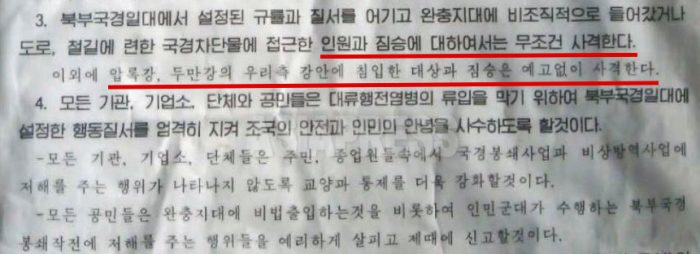
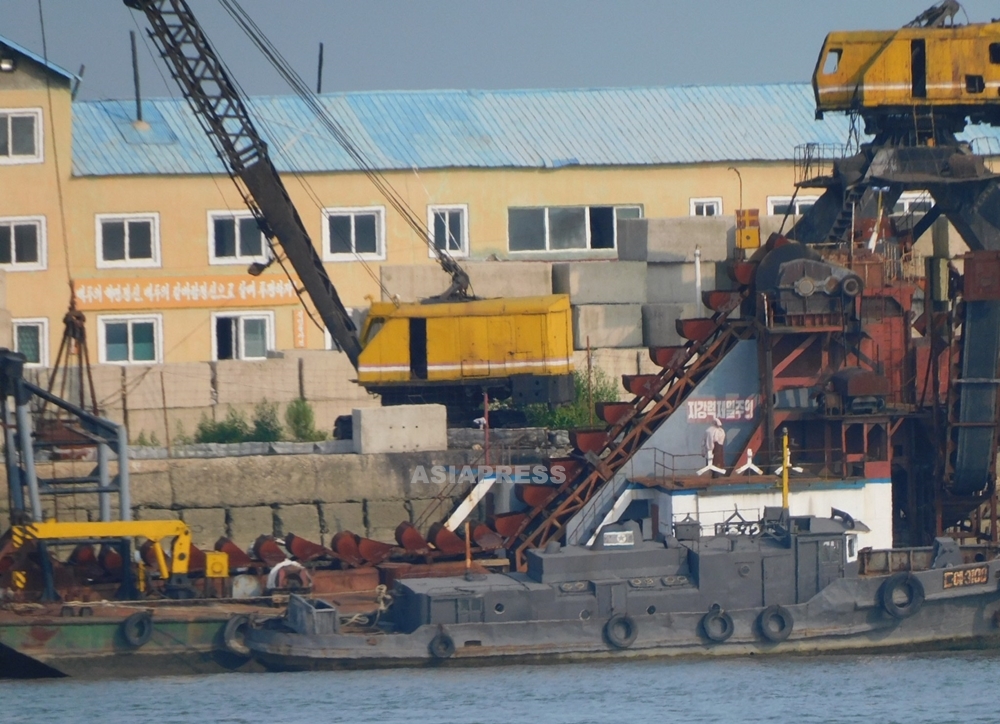
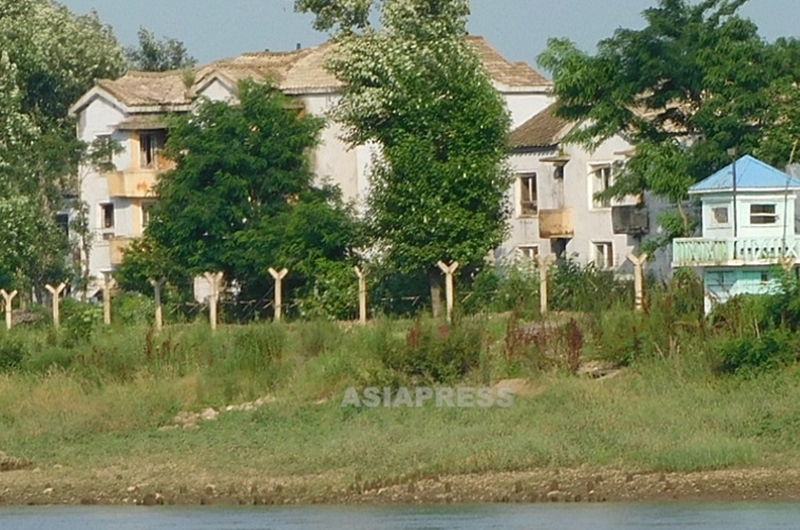
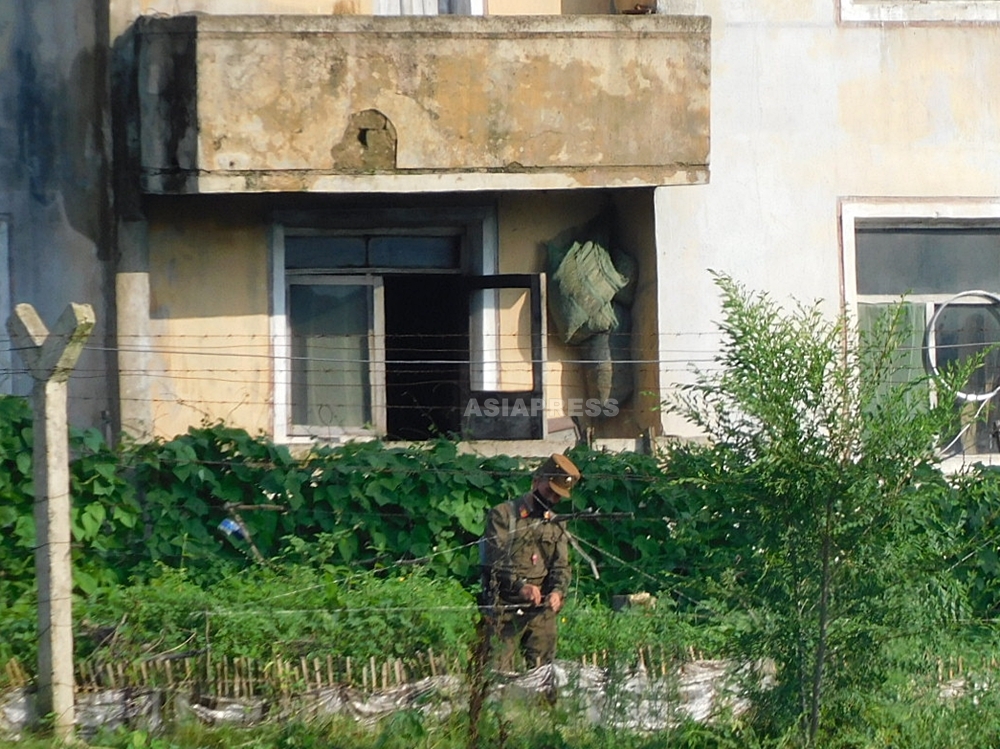
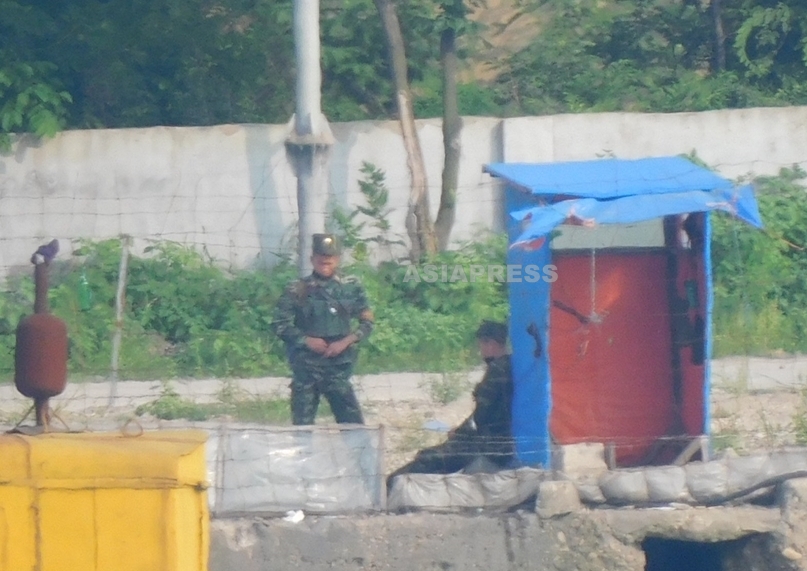
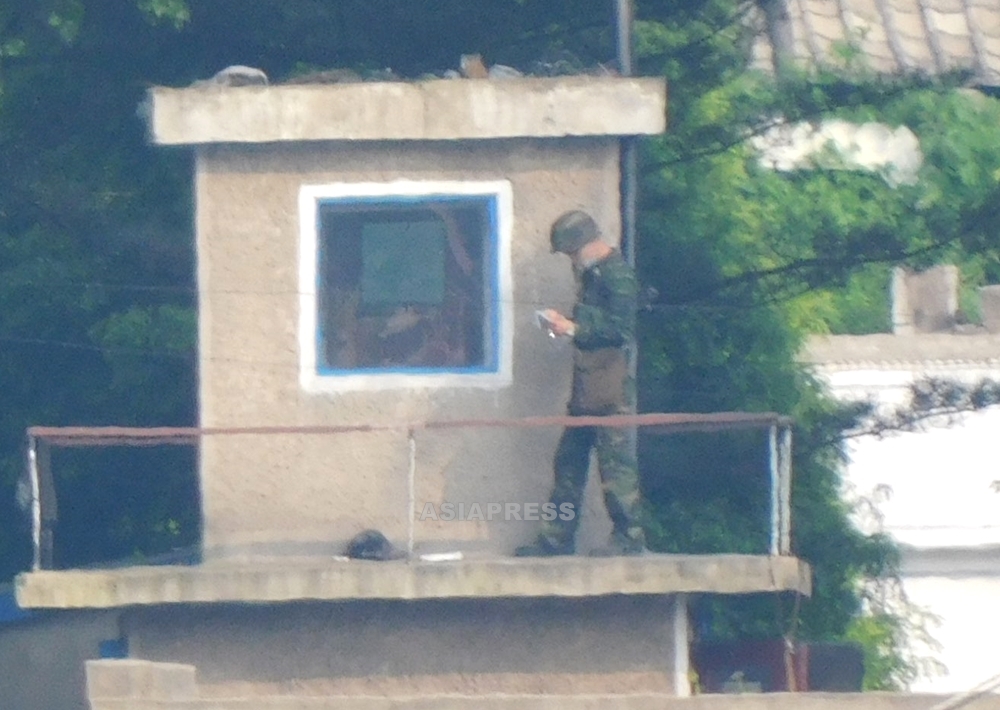
The following photos were taken during a visit by ASIAPRESS in October 2017. At that time, there were many residents along the riverside, but now there is little to be seen except for soldiers.
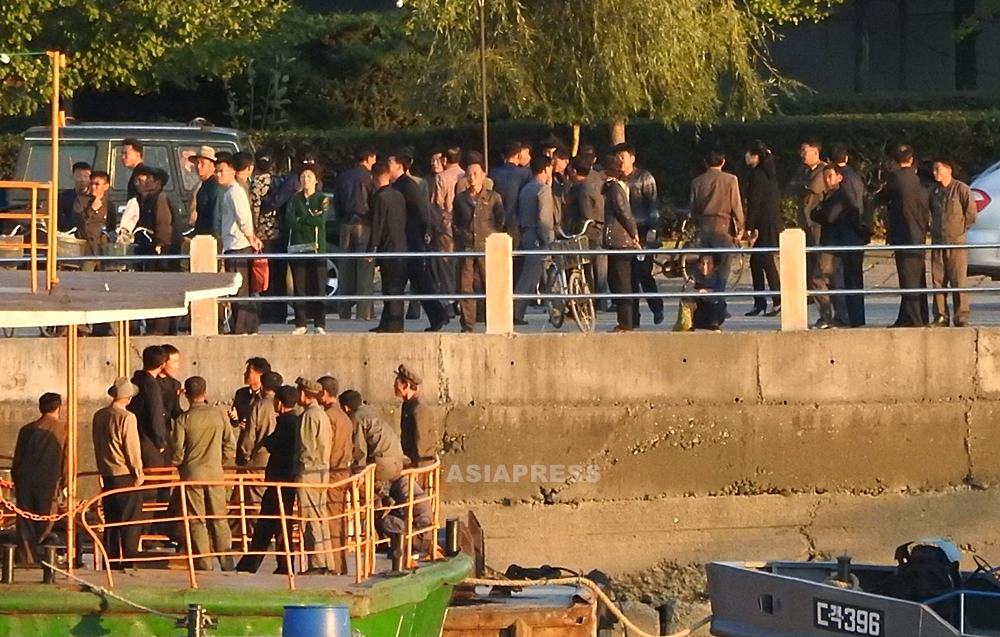
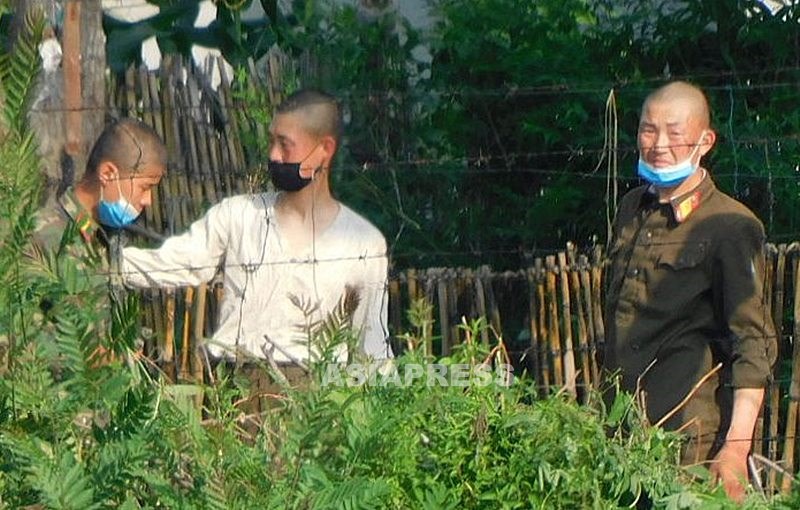
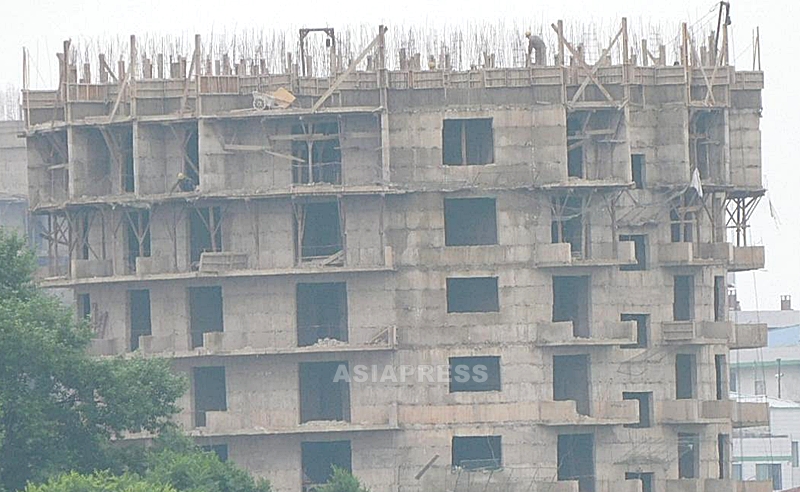
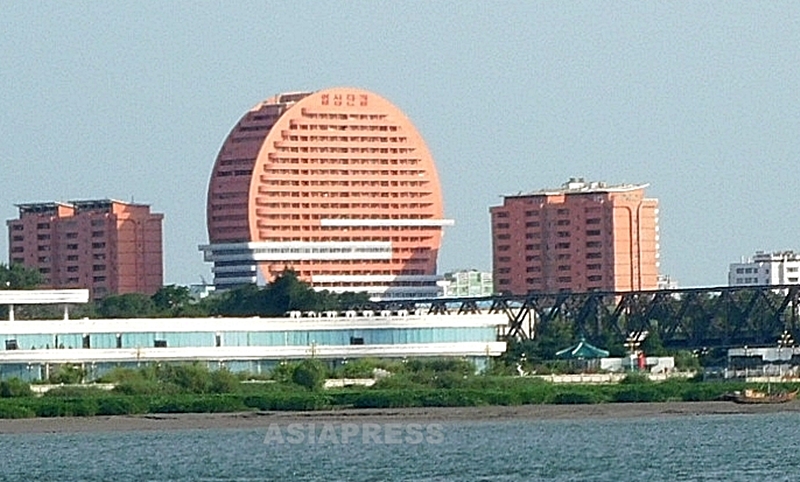
(Photo 13) The circular building is eye-catching even from the Chinese side. The slogan at the top says, "One Heart, One Mind". The steel bridge on the lower right is an international bridge connecting the city with China (Sinuiju City).
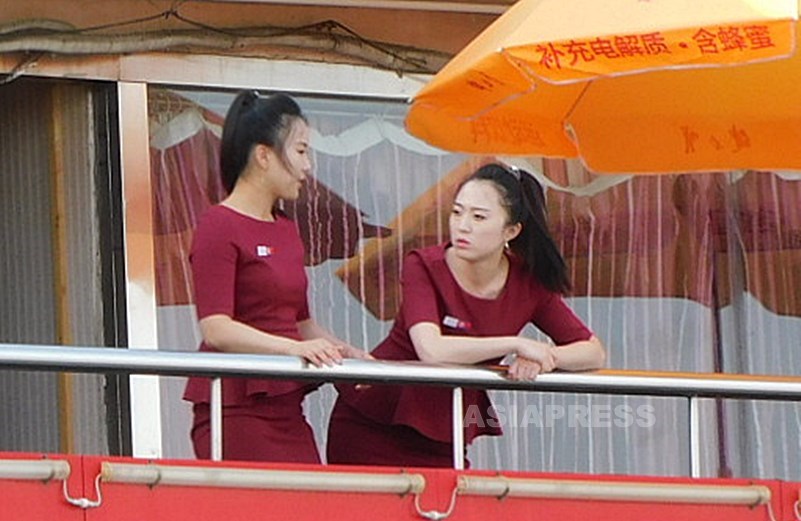
Related Articlefa-arrow-circle-right<Latest Photo Report> Scenes of North Korea Captured by Super Telephoto Lens (2) People Trapped in a "Cage" [ISHIMARU Jiro]
- <Inside N. Korea>Domestic Currency Appreciates by 22% as Chinese Yuan and U.S. Dollar Mysteriously Plunge Again (2021-08-05)
- <Inside N. Korea> Cash-Strapped State Releases Prisoners and Reduces Sentences Due to Dwindling Supplies of Food (2021-08-02)
- <Inside N. Korea> Last Resort: Urban Poor Flee to Farming Villages to Beg for Food (2021-07-27)
- <Inside N. Korea>Discharged But Disgruntled: Former Soldiers Wreak Havoc After Being Sent to Cooperative Farms (2021-07-26)
